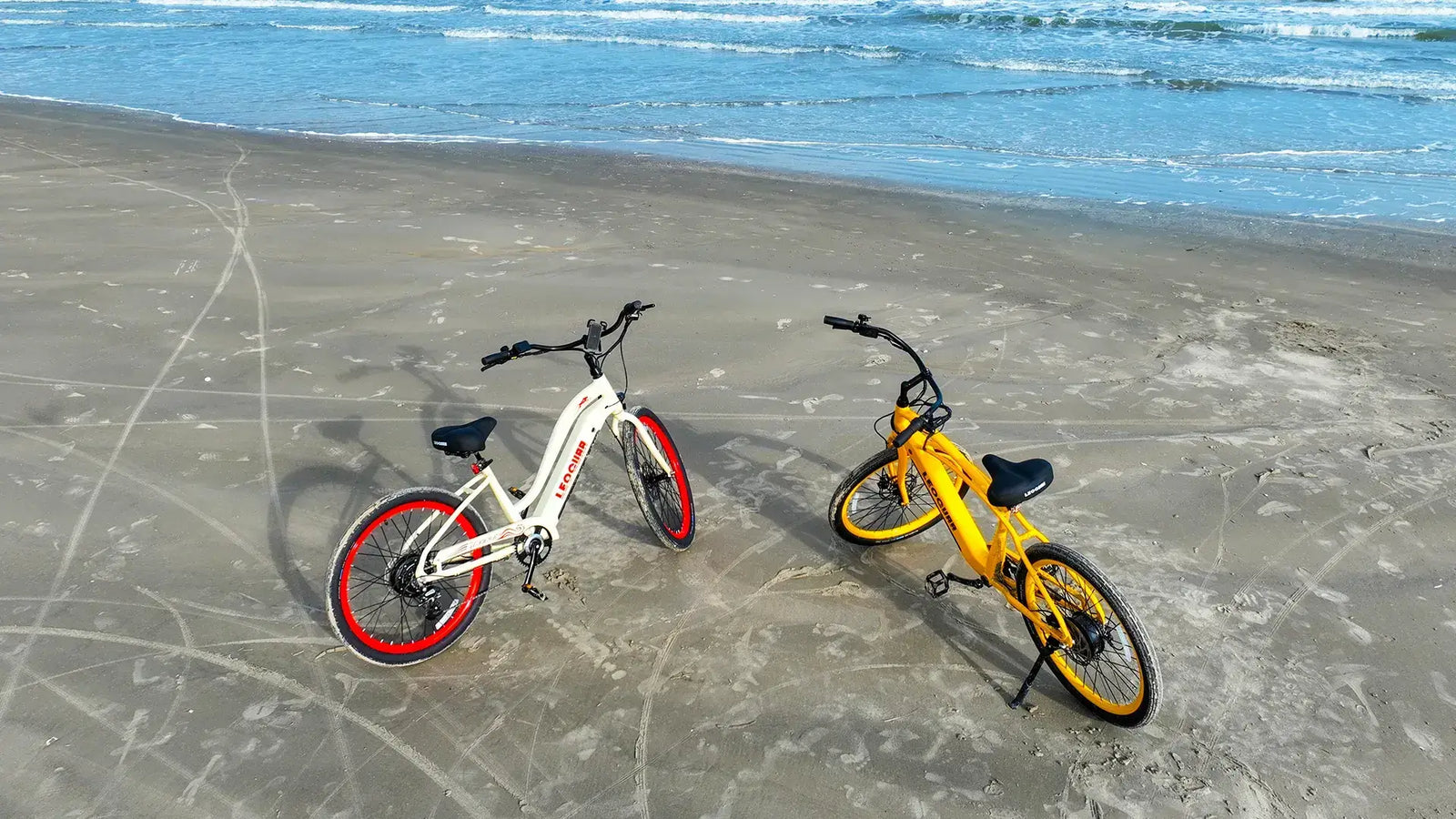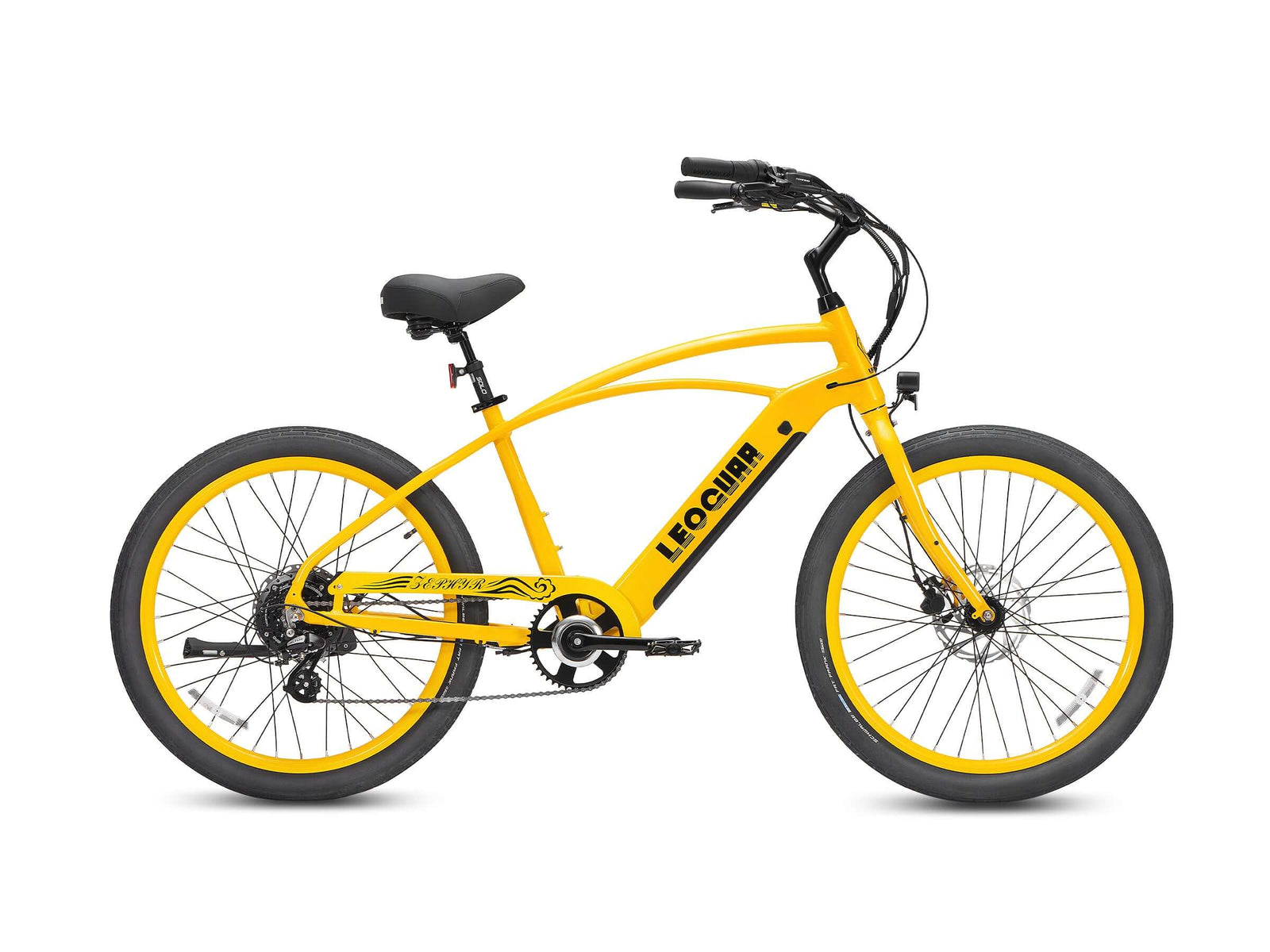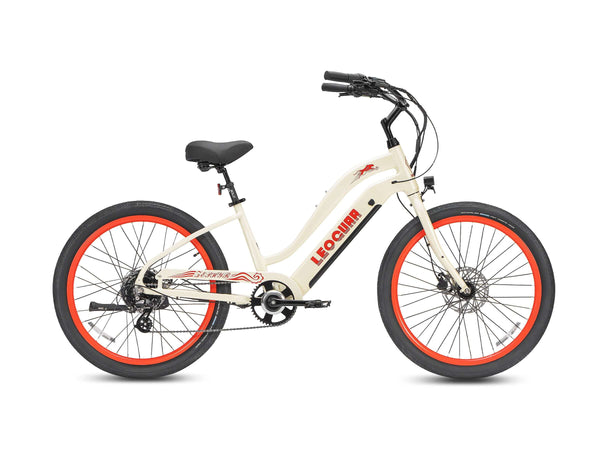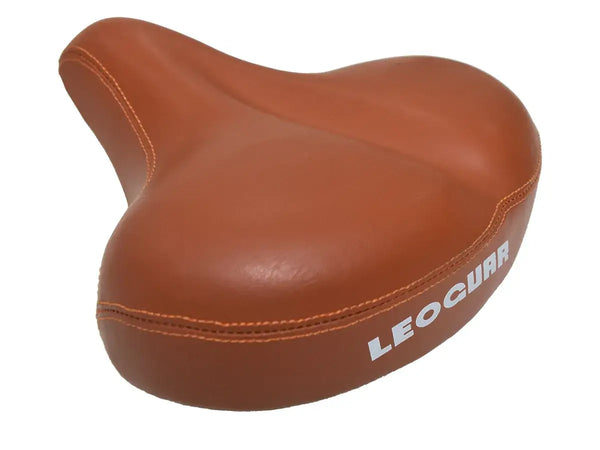
Cruiser Style Electric Bikes That Let You Ride for Miles Without Back Pain
Rediscover Cycling Without Pain
There's a unique freedom that comes from riding a bicycle. The wind blows through your hair, the tires hum quietly, and you can explore your neighborhood at your own pace. But for many people, this simple joy gets overshadowed by a nagging fear or a persistent reality: back pain.
The dream of a leisurely ride quickly turns into a calculation of how many miles you can manage before the discomfort sets in. We believe that pain shouldn't be a barrier to cycling. Cruiser style electric bikes offer a powerful and comfortable solution, and this guide is designed to show you exactly how. We'll explore the specific features that protect your back, why they work, and how you can choose the perfect bike to ride for miles, pain-free.
The Back Pain Reality
For many cyclists, back pain stems from two primary issues: poor riding posture and an improperly fitted bicycle. Leaning forward for extended periods, a common position on road or mountain bikes, places significant strain on the lower back, shoulders, and neck. This unnatural curvature can quickly lead to fatigue and chronic pain, turning a beloved hobby into a source of discomfort.
The Comfort Solution
This is where the magic of cruiser style electric bikes comes in. By combining an ergonomic, comfort-first design with the gentle push of an electric motor, these bikes fundamentally change the riding experience. With their upright posture and features designed to absorb road shock, they allow you to ride longer and farther. This guide will focus on these bikes, particularly those with step-through frames, to help you find an option that provides truly pain-free rides.
Why Traditional Bikes Cause Pain
To appreciate the solution, it's essential to understand the problem. The design of a bicycle directly dictates your posture, and that posture determines the forces acting on your spine. Many popular bike styles, while excellent for speed or off-road performance, are not optimized for back health.
The Aggressive Posture Problem
Think of a road racer or a mountain biker. Their posture is low and forward-leaning, or "aggressive." This position is aerodynamic and allows for powerful pedaling, but it forces the spine into a flexed C-shape. This constant flexion puts sustained pressure on the lumbar vertebrae and the muscles supporting them. Over time, this can lead to muscle strain, disc pressure, and pain that radiates from the lower back up to the neck and shoulders.
The Cruiser Difference
Cruiser style electric bikes are engineered with a completely different philosophy. Instead of prioritizing speed, they prioritize comfort. This is achieved through specific geometric choices. The pedals are positioned further forward, and the handlebars are swept back toward the rider.
This combination encourages a relaxed, upright sitting position, keeping your spine in a more natural, neutral alignment. According to spine health experts, proper cycling posture can significantly reduce back strain, and the cruiser design is the epitome of this principle. It shifts your weight from your hands and lower back to your sit bones, where it belongs.
A Back-Friendly E-Bike Anatomy
Not all cruiser e-bikes are created equal. To find a truly back-friendly model, you need to know which features matter most. These components work together as a system to create an exceptionally comfortable and supportive ride. Here are the seven key features to look for.
1. Upright Frame Geometry
This is the non-negotiable foundation of a comfort-focused bike. The frame's design must place the seat in a position relative to the pedals and handlebars that allows you to sit fully upright. Your back should be straight, your shoulders relaxed, and your head up, looking forward. This posture minimizes stress on your lumbar spine and neck, allowing you to ride for hours without the slouching that leads to pain.
2. Swept-Back Handlebars
These high, wide handlebars curve back toward you, falling naturally into your hands without requiring you to lean forward. This design dramatically reduces the reach from the saddle to the grips, eliminating strain on your shoulders, upper back, and wrists. It keeps all controls within easy, comfortable reach, promoting a relaxed and confident posture.
3. A Wide, Cushioned Saddle
A narrow, hard saddle is a primary source of discomfort. A back-friendly cruiser will have a wide, generously padded saddle. This design provides a larger surface area to properly support your sit bones, which bear the majority of your weight in an upright position. From our experience, the difference is immediate.
Hitting a small pothole on a standard saddle sends a jarring shock straight up the spine. On a wide, sprung cruiser saddle, that same impact is diffused, feeling more like a dull thud than a sharp jolt to the lower back. For ultimate comfort, look for a saddle with built-in springs or an added suspension seatpost, which further isolates you from bumps.
4. Suspension Fork
While the saddle and seatpost handle impacts from the rear, a suspension fork tackles them from the front. This feature, common on quality cruisers, contains springs or air chambers that compress when you hit a bump, absorbing the impact before it travels up the handlebars to your arms, shoulders, and spine. It smooths out rough pavement and gravel paths, reducing the cumulative fatigue that can aggravate back issues.
5. Balloon Tires
Tires are your first line of defense against road vibrations. Unlike the narrow, high-pressure tires on a road bike, cruisers use wide "balloon" tires. These tires, often 2.125 inches or wider, have a large volume of air and are run at a lower pressure. They act as natural shock absorbers, deforming slightly to swallow up cracks, small rocks, and other road imperfections. This creates a floating, cushioned ride that insulates your body from constant, fatiguing vibrations.
6. Low Step-Through Frame
This design feature is a game-changer for accessibility and is crucial for anyone with back pain or limited mobility. We will cover this in more detail, but its importance in a comfort-first bike cannot be overstated.
7. A Smooth, Predictable Motor
The "electric" part of the e-bike is also a key comfort feature. A jerky, unpredictable motor can cause you to lurch forward or back, straining your core and back muscles. A high-quality cruiser e-bike will use a torque-sensing motor. This system measures how hard you are pedaling and delivers power proportionally. The result is a smooth, intuitive, and natural-feeling assist that feels like an extension of your own effort, preventing sudden movements that can aggravate a sensitive back.
Step-Through E-Bikes for Comfort
While the classic cruiser has a high top tube, the modern evolution for ultimate comfort and accessibility is the step-through e-bike. For riders concerned with back pain, this design is often the superior choice.
What is a Step-Through?
A step-through frame, also known as a low-step or open frame, is a bicycle design that eliminates the high top tube that runs between the handlebars and the seat. This creates a low, open space that you can simply step through to mount and dismount the bike.
Key Benefits for Back Pain
This seemingly simple design modification offers profound ergonomic advantages for anyone with a sensitive back or mobility challenges. As experts have noted, the benefits of step-through e-bikes extend far beyond simple convenience, directly impacting rider safety and comfort.
- Easy On and Off: The primary benefit is eliminating the need to swing a leg high over the rear of the bike. This simple act can be difficult or painful for those with back stiffness or sciatica, and the step-through design removes this barrier entirely.
- Increased Confidence: Being able to easily put a foot flat on the ground at a stoplight or intersection is incredibly reassuring. This stability reduces anxiety and prevents the kind of sudden, off-balance movements that can twist or strain the back.
- Reduced Risk of Injury: The twisting motion required to mount a traditional bike can directly aggravate a sensitive lower back or hip. The step-through design minimizes these problematic movements, making every part of the ride—from starting to stopping—safer and more comfortable.
A Holistic Approach to Riding
The right bike is the most important part of the equation, but it isn't the only part. Adopting a few simple habits can further enhance your comfort and ensure every ride is a positive experience. This holistic approach empowers you to take control of your well-being on and off the bike.
1. Fine-Tuning Your Fit
Even on the perfect bike, a few small adjustments can make a world of difference. Set your saddle height so that when the pedal is at its lowest point, your knee has a slight, soft bend. You should not be able to fully lock your knee. Then, adjust the handlebar stem and angle (if possible) to bring the grips to a position where your arms are relaxed and your shoulders can drop, free of tension.
2. Simple Pre-Ride Stretches
Warming up your muscles can prepare your back for the ride. A few gentle stretches can increase flexibility and reduce stiffness. Try a simple cat-cow stretch on all fours to mobilize the spine, or a gentle standing hamstring stretch. Remember, this is not medical advice; if you have a diagnosed back condition, please consult your doctor or physical therapist for appropriate exercises.
3. Smart Riding Techniques
How you ride is as important as what you ride. We've learned from experience that a few small changes in technique can save your back. When approaching a big bump or pothole, shift your weight forward slightly and lift out of the saddle, letting your bent legs absorb the impact instead of your spine. Use your motor!
Let the electric assist do the work on steep hills to avoid straining your lower back. Finally, maintain a "soft" elbow posture with a slight bend, allowing your arms to act as another layer of suspension.
Choosing Your Cruiser E-Bike
With the right knowledge, choosing a bike that will serve you for years is straightforward. This checklist summarizes the key ergonomic features we've discussed, giving you a simple framework to evaluate your options and make a confident decision.
Your Comfort-First Checklist
Use this table when comparing models to ensure you're prioritizing the features that directly contribute to a pain-free ride.
| Feature | What to Look For (for Back Comfort) |
|---|---|
| Frame Style | A low step-through frame for easy mounting and dismounting. |
| Riding Position | Fully upright geometry with swept-back handlebars. |
| Suspension | At a minimum, a suspension seatpost. Ideally, also a front suspension fork. |
| Saddle | A wide, cushioned saddle, preferably with built-in springs. |
| Tires | Wide "balloon" tires (2.0" or wider) for natural shock absorption. |
| Motor Type | A torque-sensing motor for a smoother, more intuitive power delivery. |
Fortunately, the market has responded to the demand for comfort, and several modern e-bikes now combine this technology with comfortable designs. When you read reviews, you'll notice that expert reviews often highlight comfort features as a key factor in their ratings, validating the importance of this checklist.
This focus on rider well-being reflects a growing trend toward ergonomic designs in the leisure and commuter e-bike markets, making it easier than ever to find a bike that fits both your lifestyle and your body's needs.

Back on the Road to Adventure
Back pain does not have to mean the end of your cycling adventures. By choosing the right tool for the job, you can reclaim the joy of riding. A cruiser style electric bike, specifically a step-through model equipped with the key comfort features we've outlined, is more than just a bicycle; it's an investment in your health and happiness. It's a vehicle for exploration, gentle exercise, and pure, simple fun—all without the price of pain. The open road is waiting. It's time to get back out there and enjoy the ride.
Frequently Asked Questions
1. Q: Can cruiser style electric bikes really eliminate back pain while cycling?
A: While we can't guarantee complete elimination of pain for everyone, cruiser style electric bikes are specifically designed to address the main causes of cycling-related back pain. The upright riding position, comfortable saddle, and suspension features significantly reduce strain on your spine compared to traditional bikes. Many riders with back issues find these bikes allow them to cycle comfortably for much longer periods.
2. Q: What's the difference between a regular cruiser bike and a step-through e-bike for back comfort?
A: Step-through e-bikes offer all the comfort benefits of cruiser bikes plus easier mounting and dismounting, which reduces strain on your back and hips. The electric motor also means you don't have to strain your back muscles when pedaling uphill or against wind. The low frame design eliminates the need to swing your leg high over the bike, which can be painful for people with back problems.
3. Q: How do I know if the saddle height is correct for my back health?
A: When the pedal is at its lowest point, your knee should have a slight bend - you shouldn't be able to fully straighten your leg. If the saddle is too low, you'll put extra strain on your knees and back. If it's too high, you'll rock side to side while pedaling, which can stress your lower back. Start with this basic adjustment and fine-tune based on comfort during longer rides.
4. Q: Are balloon tires really necessary for back comfort, or is suspension enough?
A: Both features work together to provide maximum comfort. Balloon tires are your first line of defense against road vibrations and small bumps, while suspension handles larger impacts. Think of balloon tires as providing constant, gentle cushioning, while suspension deals with bigger shocks. Having both creates a much more comfortable ride than either feature alone.
5. Q: How much should I expect to spend on a quality cruiser style electric bike with good back support features?
A: Quality cruiser style electric bikes with the comfort features discussed in this guide typically range from $1,200 to $3,000. While this might seem like a significant investment, consider the long-term benefits to your health and the enjoyment you'll get from pain-free cycling. Look for bikes that include the key features: step-through frame, upright geometry, suspension (at least a seatpost), wide cushioned saddle, and a smooth torque-sensing motor.










































Leave a comment